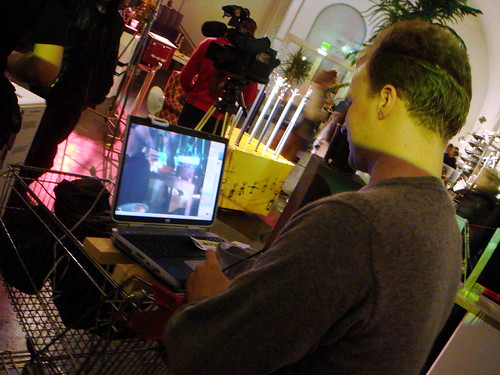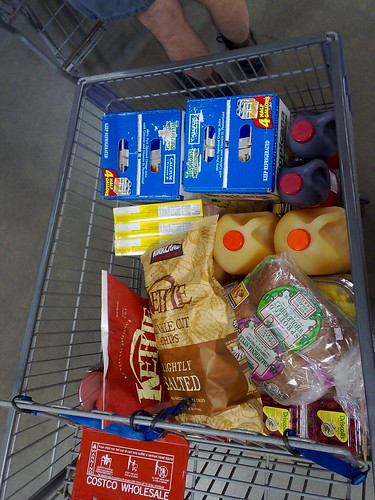Not just predicting the present, but the future: Twitter and upcoming movies
Search queries have been used recently to “predict the present“, as Hal Varian has called it. Now some initial use of Twitter chatter to predict the future:
The chatter in Twitter can accurately predict the box-office revenues of upcoming movies weeks before they are released. In fact, Tweets can predict the performance of films better than market-based predictions, such as Hollywood Stock Exchange, which have been the best predictors to date. (Kevin Kelley)
Here is the paper by Asur and Huberman from HP Labs. Also see a similar use of online discussion forums.
But the obvious question from my previous post is, how much improvement do you get by adding more inputs to the model? That is, how does the combined Hollywood Stock Exchange and Twitter chatter model perform? The authors report adding the number of theaters the movie opens in to both models, but not combining them directly.
Laptop + shopping cart = mobile
This guy can roll up with laptop and webcam to record robots (photo CC from violetblue):
But in Silicon Valley, combining laptops and shopping carts is just a way to get chores done. When at Whole Foods in Los Altos, I saw a man pushing a shopping cart with a laptop in the part where you can sit your toddler. I suppose he was reading a recipe or something. (I, and I’m sure other Valley folks, do that on a phone.)
A bit odd, but then again, I used to be (I’ve fallen off a bit) judicious about capturing the contents of my shopping cart with ZoneTag.
Advanced Soldier Sensor Information System and Technology
Yes, that spells ASSIST.
Check out this call for proposals from DARPA (also see Wired News). This research program is designed to create and evaluate systems that use sensors to capture soldiers’ experiences in the field, thus allowing for (spatially and temporally) distant review and analysis of this data, as well as augmenting their abilities while still in the field.
I found it interesting to consider differences in requirements between this program and others that would apply some similar technologies and involve similar interactions — but for other purposes. For example, two such uses are (1) everyday life recording for social sharing and memory and (2) rich data collection as part of ethnographic observation and participation.
When doing some observation myself, I strung my cameraphone around my neck and used Waymarkr to automatically capture a photo every minute or so. Check out the results from my visit to a flea market in San Francisco.


Photos of two ways to wear a cameraphone from Waymarkr. Incidentally, Waymarkr uses the cell-tower-based location API created for ZoneTag, a project I worked on at Yahoo! Research Berkeley.
Also, for a use more like (1) in a fashion context, see Blogging in Motion. This project (for Yahoo! Hack Day) created a “auto-blogging purse” that captures photos (again using ZoneTag) whenever the wearer moves around (sensed using GPS).

